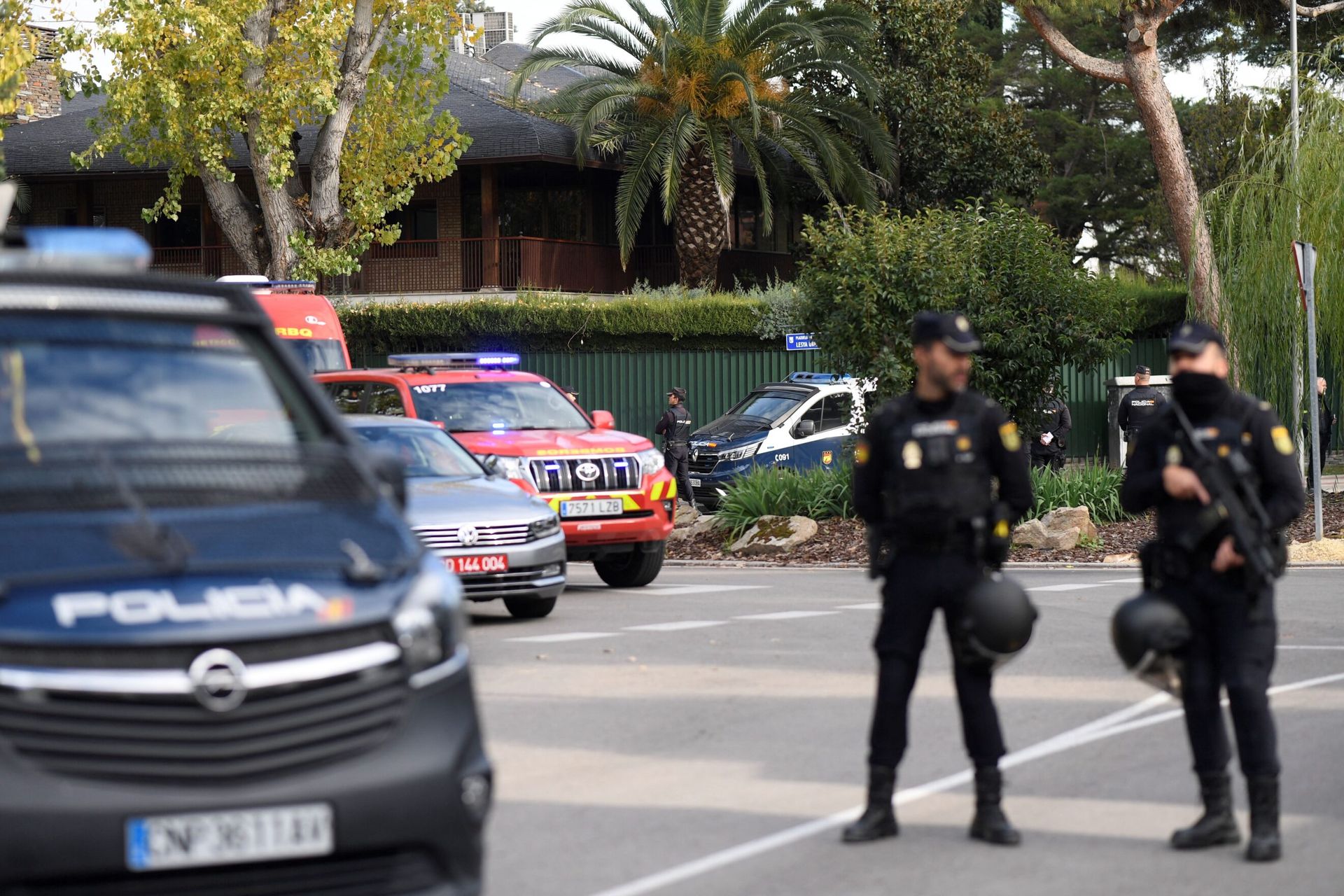Spain: More Letter Bombs Reported Following Ukrainian Embassy Blast
On Thursday, letter bombs were reported in as many as five other locations in Spain after an incendiary device, hidden in a parcel, detonated at Ukraine's embassy in Madrid the day before.

Facts
- On Thursday, letter bombs were reported in as many as five other locations in Spain after an incendiary device, hidden in a parcel, detonated at Ukraine's embassy in Madrid the day before.
- The small blast Wednesday detonated after an embassy employee opened the parcel, causing minor injuries to the worker's hands. Ukraine has since told its diplomats to bolster security precautions at its embassies.
- A second incendiary device was later discovered at the Instalaza weapons company in Zaragoza, a province in the autonomous Aragón region of Spain. Instalaza, a weapons company founded in 1943, produces the C90 rocket launcher which Spain has donated to Ukraine.
- The Zaragoza government representative, Rosa Serrano, reportedly said in an interview with the SER station that the two envelopes appeared to have the same sender, since the same e-mail address was written on the back of both of them. Serrano said the packages came from Ukraine and this is what alarmed the arms company, which called the police.
- On Thursday, a third explosive device hidden in a mailed parcel was also discovered, this time at a Spanish air force base in Torrejon de Ardoz, a suburb of Madrid.
- Shortly thereafter, Spain's defense ministry said a similar parcel was received on Thursday before being defused by specialist officers, while Spain's interior ministry revealed that the offices of Prime Minister Pedro Sánchez had also received a similar delivery that was disarmed on Nov. 24.
- A sixth parcel was reported at the US embassy in Madrid later in the day. Prior to its discovery, and seemingly contradicting earlier statements, Deputy Interior Minister Rafael Perez told reporters that the five letter bombs were sent from within the country. "It appears that they were all sent from within the country but we are basing this on early visual inspections without yet having an in-depth technical report," he said.
- Spain's High Court, which has the authority to open criminal investigation under Spanish law, is opening a probe, Reuters reported. A source close to the investigation told the publication the devices were in similar brown envelopes and addressed to the heads of each institution. They contained loose gunpowder with an electrical ignition mechanism that would make the powder burn, rather than explode, the source said.
Sources: Al Jazeera, Guardian, News 18, and Reuters.
Narratives
- Anti-Russia narrative, as provided by Dnyuz. These packages are undoubtedly linked to Spain's support for Ukraine, given they were sent to diplomatic and military-related locations. The world has already recognized Russia as a terrorist state, so it's not wrong to suspect that the enemy of Ukraine and the West might send explosives to one of Kyiv's most vocal allies.
- Pro-Russia narrative, as provided by Tass. There's no credible evidence that points to Russia — which has openly condemned the attacks — and Spanish officials themselves have cast doubt surrounding the allegation. Rather than throw around baseless accusations, the West should focus on how best to ramp up European defense systems against bomb-by-mail terror attacks.






